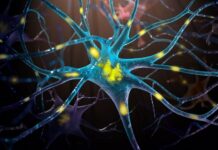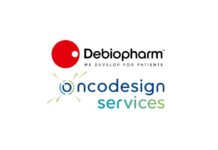Richard Lee, Director, Core Technology and Capabilities, ACD/Labs, says that integrating machine learning (ML) and artificial intelligence (AI) in pharmaceutical R&D means getting past problems with data management, quality, and expertise in order to use them to their full potential in drug discovery.
Pharmaceutical businesses are always being pushed to come up with new ideas and find quick and cheap ways to get new drugs on the market. But the process of finding new drugs and making them is complicated and can be slowed down by problems. Machine learning (ML) and artificial intelligence (AI) being used in research and development (R&D) is one of the most effective ways to deal with these problems. Even though these tools have a lot of promise, they are not easy to use.
Getting raw data and ML/AI apps to work together
One of the biggest problems pharmaceutical firms have when they use ML and AI in R&D is keeping track of all the different kinds of data that current science instruments produce. Liquid chromatography, mass spectrometry, and nuclear magnetic resonance (NMR) spectroscopy are some of the methods used to find new drugs. It is important to easily collect, organize, and understand this data before it can be used in ML/AI models.
Differences in data, putting it together, and quality
Data variety is one of the most important problems in this task. The data that comes from different tools and tests is often saved in different forms that are only available from one source. A lot of work needs to be done before these different datasets can be put together in a way that ML/AI models can understand. Normalizing, standardizing, and translating data into a uniform code are all part of this preparation, which can take a lot of time and lead to mistakes if it’s not done carefully.
The pharmaceutical business faces a big problem with putting together and integrating data. By themselves, analytical data is not enough to give a full picture of a chemistry experiment. More often than not, putting together analytical data along with full trial information is what is needed to give a full and logical picture of a chemistry study.
Another very important issue is the quality of the info. ML and AI models are only as good as the data they are built on. If you don’t fix them, data from studies can have missing information or errors that can change the results of ML/AI models. To make models that you can trust, you need to make sure the data quality by going through strict validation, cleaning, and editing processes. However, this job usually needs a lot of resources and understanding in both the subject and data science.
Access to and merging of data
After data has been cleaned and defined, it needs to be made easy to view and work with other systems. Pharmaceutical businesses often use old systems and separate data stores, which makes it hard to build a unified data environment. It is necessary to combine organized data from different sources, like testing data, in order to train complete ML models.
Getting ML and AI to work together more easily
Pharmaceutical businesses face a second problem when they have organized data: they don’t have the skills to create and use ML/AI models. A lot of businesses don’t have the specialized skills they need to make ML/AI models. If you want to use new technologies, but don’t have enough skilled workers, you may have to build a specialized team or hire outside experts, which can be expensive and take a lot of time.
For drug R&D, ACD/Labs and ML/AI
Pharmaceutical businesses face big problems when they try to use ML and AI, but they can be solved. There are tools made by ACD/Labs that make it possible for ML/AI apps to acquire data. The Spectrus tool lets a business unify and put together scientific data with chemistry context. Some automatic services that can help with this are data marshalling, format standards, data processing, and data building. Through its many APIs, the Spectrus platform can also connect to other IT environments’ information systems.
Also, ACD/Labs has been offering tools for predictive analysis, such as physiochemical property prediction based on ML and NMR spectrum prediction. In the field of chemistry computing, these tools are seen as the best. The high-throughput chemistry program ACD/Labs’ Katalyst D2D has recently been updated to include the open source ML feature Experimental Design via Bayesian Optimization (EDBO). This will improve and speed up screening tests. EDBO is a strong program that improves chemical processes by suggesting new conditions over and over again based on the outcomes of previous experiments. By building this machine learning feature right into Katalyst, ACD/Labs makes it easier for pharmaceutical businesses to use AI-driven improvement without having to know a lot about machine learning.
Along with top ML/AI companies like Atinary, ACD/Labs has taken a joint approach to help other ML/AI tools and platforms. It is Atinary’s specialty to use AI to plan and improve experiments, and their partnership with ACD/Labs adds more AI techniques to ACD/Labs’ software. Because of this relationship, ACD/Labs can offer pharmaceutical firms more complete and advanced ML/AI options. These technologies can be easily added to current R&D processes.
ACD/Labs helps pharmaceutical companies get past the problems that come with ML/AI implementation by giving them creative solutions like the EDBO-enhanced Katalyst and working with AI stars like Atinary. This method not only speeds up the process of finding and developing new drugs, but it also encourages new ideas and better use of resources throughout the R&D process.




















